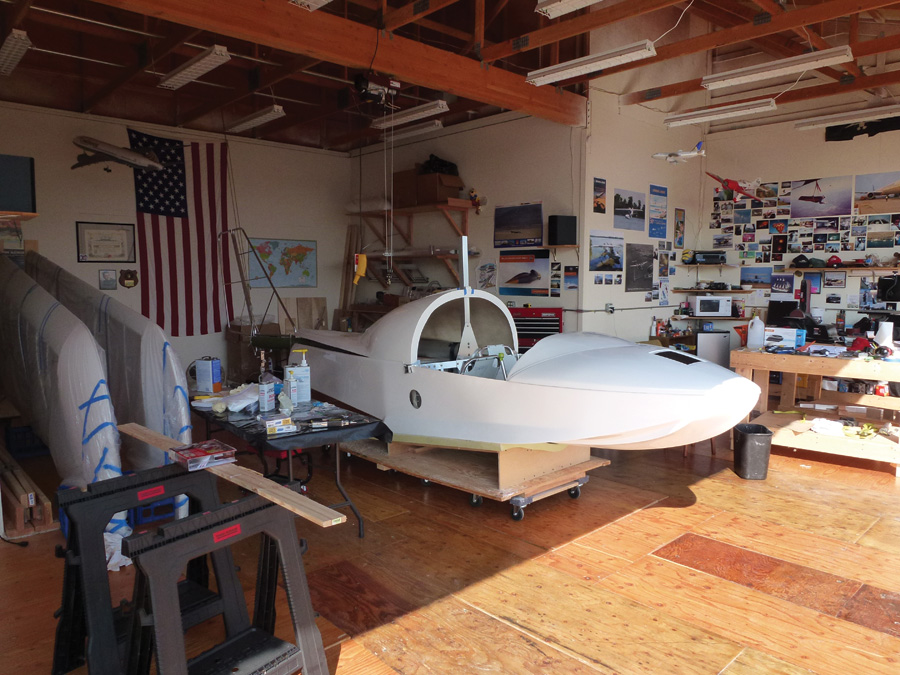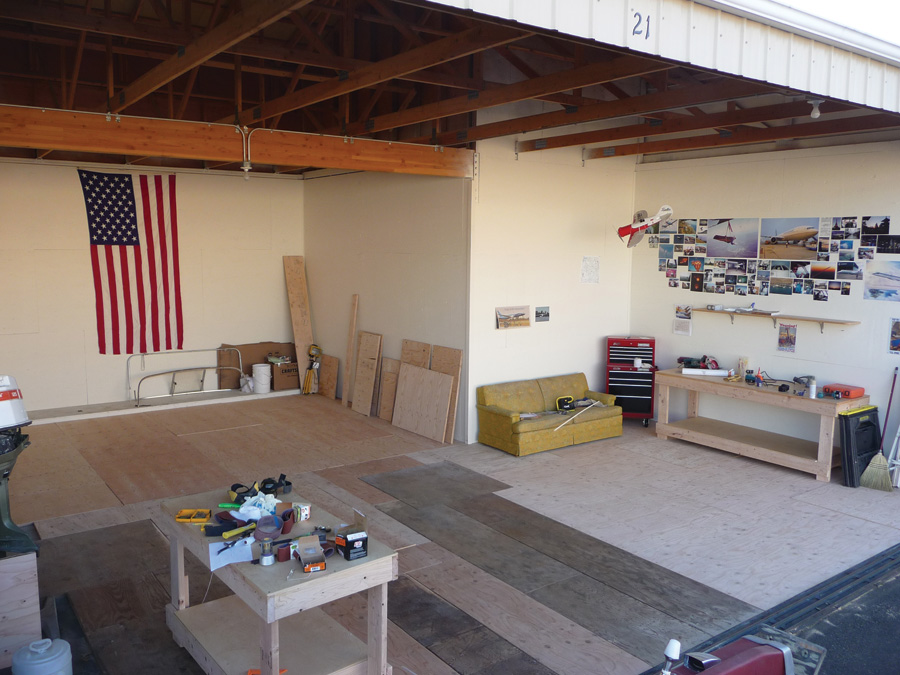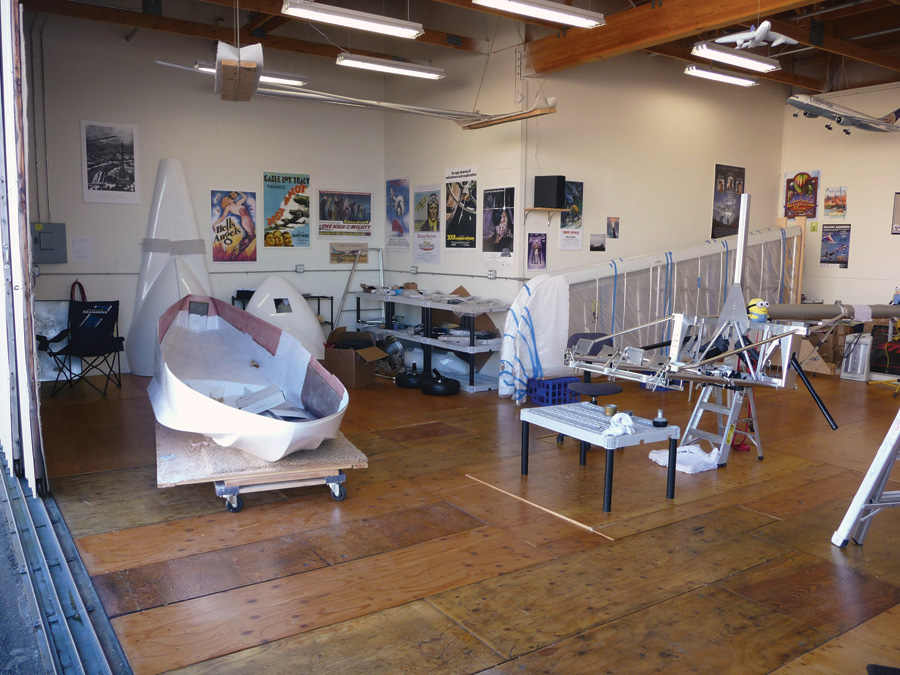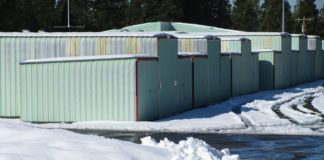“You have got to be kidding me! Whoever heard of a wooden floor in a hangar?” I looked at my friend, expecting to see Einar Ketilsson’s usual gentle smile, but this time he wasn’t smiling. Instead, he peered over his spectacles and started listing the reasons I should put a wooden floor in my hangar. After the third one, I had to admit, he might be on to something…
In order to tell this story, we first have to step into our Wayback machine and return to 2009. As we remember (no matter how hard we try to forget), in 2009 the economy was in hard times. People all over were looking to cut expenses, and one easy way was to sell planes and hangars. By mid-2009 five hangars at my airport had come up for sale. Five. At an airport where a single hangar might come up for rent every few years, and the waiting list to purchase a hangar moved at a pre-global-warming glacial pace, having five hangars for sale at the same time was unprecedented.
What pilot hasn’t dreamed of having a hangar of their own, a man (or woman) cave to put up airplane posters and have a beat-up couch to lay around on, reading old Richard Bach, Ernie Gann, and Gordon Baxter books and back issues of KITPLANES? In 2009 I had been volunteering at a local warbird museum, and had learned that (except for the price tag) working on real airplanes was very similar to working on the radio controlled models I had been building all my life. Encouraged by the mechanics at the museum, and with promises of help and support from them, I was starting to think that maybe, just maybe, I had the ability to build my own airplane.
A long time ago, in a city far, far away, as a starving flight instructor, I had fallen in love with the X-Wing-like Rutan Long-EZ, but I was also infatuated with the Progressive Aerodyne Searey. Having been recalled from furlough to my airline, and with a miserable divorce long behind me, I was starting to look for a new challenge. But even though I was single, running the numbers showed that I was at least another year from being able to reasonably swing a major financial purchase like a hangar, let alone an airplane or a kit.
Of course, it was a measure of how hard the times were in 2009 that the five hangars moved slowly. As each For Sale sign disappeared, and I saw others happily moving airplanes into their new homes, I kicked myself, talked to myself, and ran my financial numbers over and over again. Reason kept winning out, but my heart…Ah, if I had listened to reason would I have even become a pilot, chasing the dream that had kept me from a normal life and instead rewarded me with a much, much richer one?
Finally, only one hangar was left. I decided that if I didn’t mind eating ramen again for a while, and took out a second mortgage on my house, and only wore blue jeans and airshow T-shirts away from work…maybe I could swing it. I talked to my bank, talked to the owner of the last hangar for sale, stayed up late a couple nights grinding my teeth and thinking, What if? and finally made a decision. On October 10, 2009, I swore myself to poverty, signed a stack of papers, and Hangar 21 in the Strato row (the rows of hangars are named after clouds) was mine.
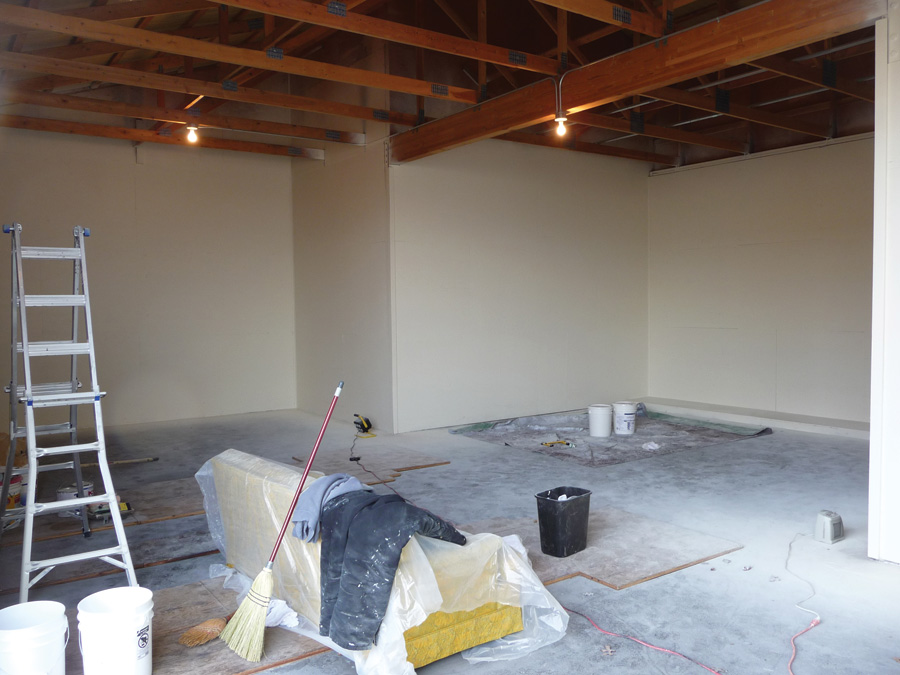
Airless sprayers are fun, messy, and a fast way to paint. It took about two days to give the walls an even, off-white coat of paint.
Home Sweet Hangar
Strato 21 had been around for a while. While relatively new construction at 25 years young, it was built over the original airport tarmac that dated back to the 1940s, and a previous owner had finished the interior with plywood and insulation, giving a rustic, semi-finished look. Sheets of 11/8-inch plywood underlayment for the nose- and maingear had been spiked in place to keep the plane above any water that might seep in during a storm, but I was assured by the seller not to worry. Even during the worst storms, he had never seen any water encroachment. “That’s one advantage of being on the north side, Steve,” he said. “The wind and rain come from the southwest, and the wind drives the rain into the hangars on the other side, while we stay dry.” Sounded good to me.
The first project was to paint the walls. I wasn’t sure what I was going to put in my hangar, but I knew it was going to be a kit of some kind, which meant I was going to be spending a lot of time there, and I wanted a nice working environment. Two days of renting a tankless sprayer gave the walls an even, off-white coat of paint, which left just one slight problem: the floor.
Actually, it was a big problem. A prior owner had sprayed a layer of oil-based sealant over the old tarmac, giving the hangar floor an even, black covering. But since it was black, it soaked up the light and made the hangar a dark pit. And because the sealant was oil based, I couldn’t paint it. The two bids I took for a concrete floor were cost prohibitive, and I received mixed opinions if an epoxy coating would stick, or if the coating would have to be stripped.
I was in my hangar one day, frustrated and kicking the plywood floor strips when Einar stopped by. “Look,” he said, “You’ve got bad knees and can barely spend an entire day at the museum anymore. Why don’t you just lay down a wood floor?” Einar started listing the reasons: the wood would be easy on my knees, more comfortable to lay on, give a nice look, and he continued with several more reasons as I listened.
I have to say, at first I was pretty skeptical about the idea. Whoever heard of a wooden floor in a hangar? But when we carefully examined the asphalt, we saw it was level, with only a couple of small ripples, so 4×8-foot plywood sheets would lay flat, and the price would be far less than a concrete floor. We taped some small plastic drop cloths down, closed the hangar up, and after a couple weeks came back for a look. It had been a rainy winter and spring in the Pacific Northwest, but despite that, we found that there was no condensation under the drop cloths, alleviating any worries about the wood rotting from underneath. A wood floor was looking more and more like the way to go.
Installing the Floor
A local lumberyard agreed to deliver to the airport. It was a beautiful spring day when their truck pulled up to the gate with a flatbed of plywood sheets, the driver asking, “What the heck is going on?” He was the first of many who laughed at our idea and, to be honest, I still had a bit of lingering uncertainty, too. We briefly tried to remove the “legacy” plywood strips, but they had been tightly spiked into the concrete, possibly even cemented into place, and we could not even get a crowbar under them to start the removal process. By this time I had become fond of the darkened worn wood and was actually happy to see them stay, so we decided to just fit the new 4×8 sheets around them.
We measured once, cut twice, remembered it was the other way around, and redid the first sheet. Laying the new wood out and around the legacy wood on the floor became a giant jigsaw puzzle, with each sheet interlocking into an intricate design with overlapping seams. As we had hoped, there were only a few spots where the floor was less than level. Since it was only off by inch or so, it was something I could live with, but we used Tapcon screws to secure the plywood anyway.
The floor looked great when it was all laid out, but it had to be sealed, too. I rented a large floor sander, but even a fine grit quickly ate into the soft plywood. I bit the bullet and got my palm finishing sander out, spending an afternoon moving side to side from the back to the front of the hangar, smoothing each sheet. I’ll confess I settled for a good vacuuming in place of wiping each sheet with a tack cloth, though. I hoped, and it has turned out, that any grit left over would just become a bit of built-in nonskid on the floor.
I’m no great woodworker, but I do love working with it. As pretty as the raw floor looked (and smelled), I knew it would look and hold up even better with a coating of varnish sealing it. Taking the advice of a contractor friend, we decided a good satin polyurethane would do nicely. I’d just dump a sploosh right from the can onto a sheet before spreading and smoothing it with a lambswool brush. It was Zen and the art of hangar floor maintenance as I’d dole out the varnish, spread it out, look for runs, and go back and try to smooth them out without messing things up. Yup, there are a few spots where the varnish is less than perfect, but it’s an amateur-laid floor, and…well…it’s a hangar floor. Over a few days, I laid four coats of varnish down with a very light hand sanding after each one, then let the whole thing dry for a couple more weeks while I went off to my night job flying for the airlines. When I came home and reopened the hangar, I was knocked over by the fumes from the varnish, but I was also delighted by the way the floor had turned out.
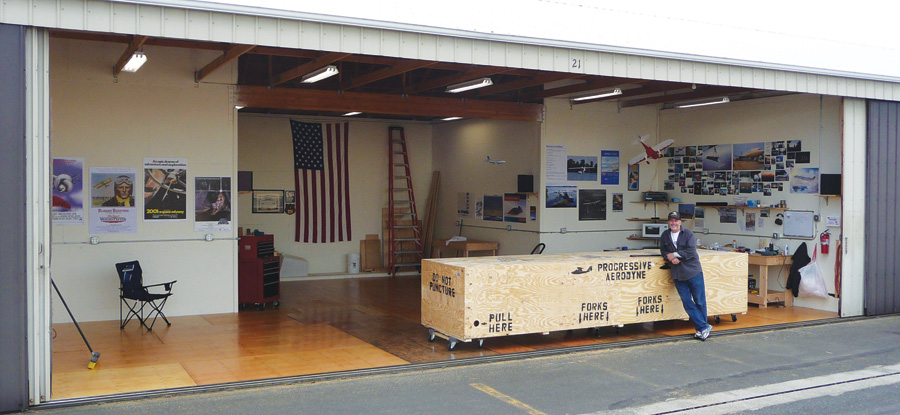
The adventure begins: With the floor in place, it was time to get started building the Searey. The kit was delivered in April 2010.
Long-Term Results
It’s been six years since the floor was laid. One mistake I made was not putting a vapor barrier down over the entire hangar footprint before laying the wood, but every year I lift a few panels and check underneath. So far, there’s been no sign of rot. The wood has gradually pulled up and away from the Tapcon screws, resulting in a couple of small trip hazards that are, fortunately, far away from the main work area. I use them as fatigue checks: If I forget about them and stumble, I know I’m too tired to be working on the airplane and call it quits for the day.
The floor has performed beyond my expectations, staying warm in the winter and cool during the summer. As a cushion for my knees, it’s just what the doctor ordered. If I get rolling on a section of the build, I can spend an entire day and most of a night working in the hangar without hurting the next day. And I’ve found other benefits, like if you drop a cordless drill from the top of a ladder, the drill will not break, but will only make a small dent in the floor—at least hypothetically.

Teamwork: Jim “The Searey Specialist” Ratte (left), Einar Ketilsson (visible inside the hatch opening) and the author work on the avionics.
The plan had been to rent the hangar out for a year, but a couple of medical scares made me decide not to wait until things were financially reasonable, lest I totally miss out on building a plane. In April 2010 Searey kit #509 was delivered. Several months later, on a fine Autumn day, I pushed the doors open to reveal a half-built set of Searey wings. I looked to my right, at my girlfriend Giuliana, and explained that this was something very important to me, and I hoped she would understand. Giuliana took it all in and looked back at me. “My dad was a master machinist,” she said, “and you missed him by a year. He would have loved you.”
We’ve been together ever since.
Steve and Giuliana were married shortly afterward and are six years into the build of their Searey. It will fly on Wednesday—they’re just not sure which one.

